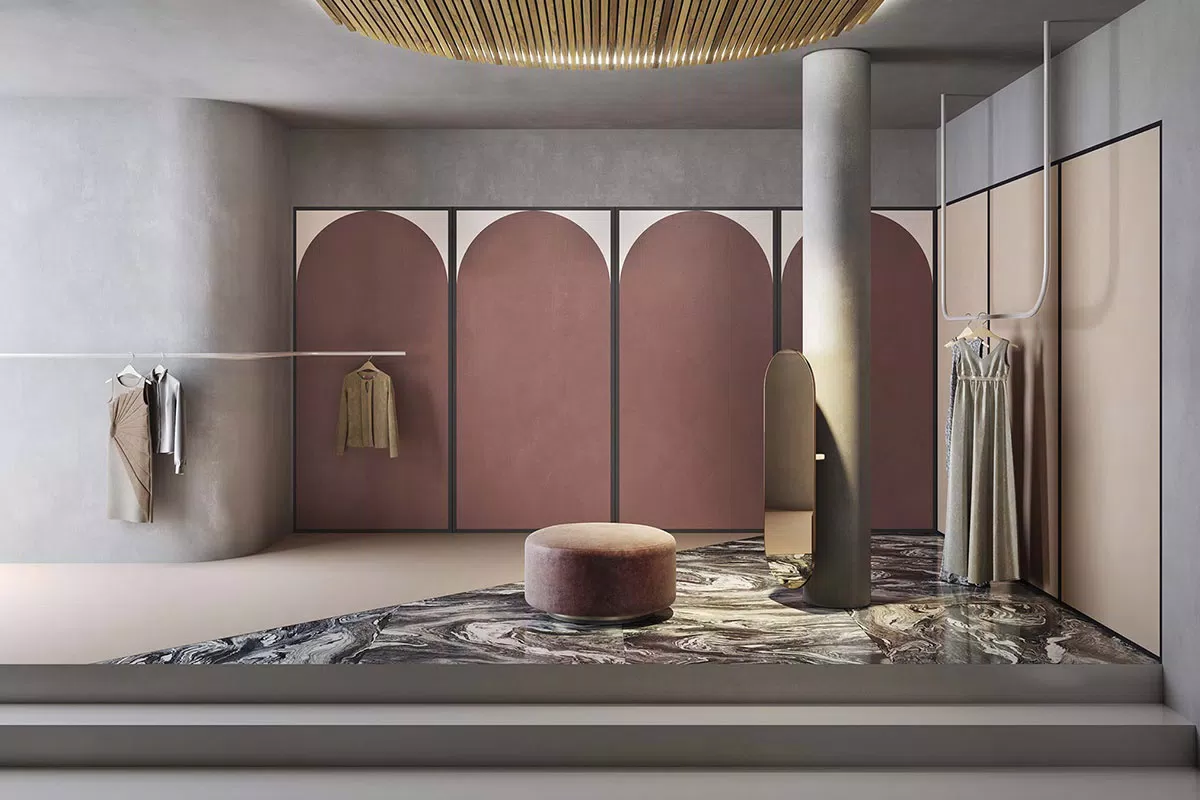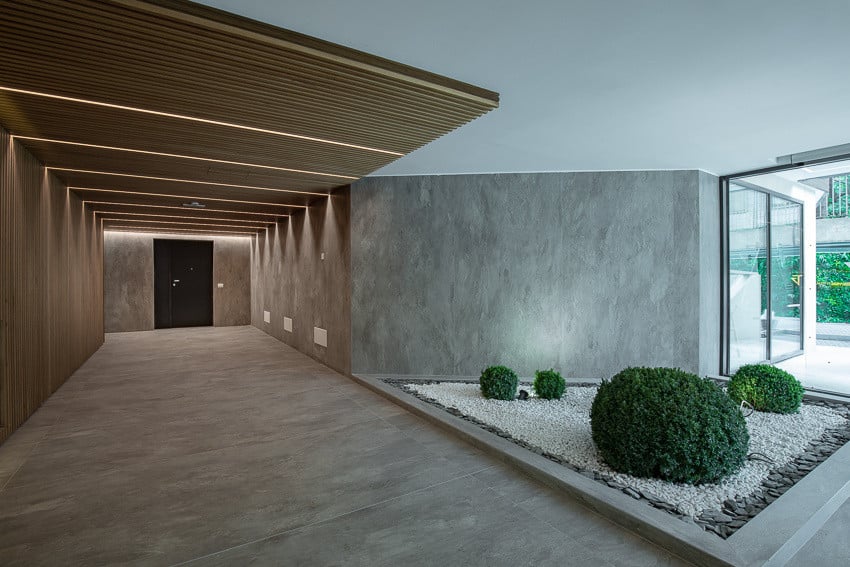The challenge of retail design
Over the past few years, the retail sector has experienced a period of profound change and innovation, driven by the need to evolve and adapt to the new challenges of consumer behaviour in the digital age.
Physical sales spaces and e-commerce now coexist: the challenge of retail is to maintain a good balance between the two sales channels and to reconsolidate itself as a tangible and experiential symbol of a brand.
The experience
Today, in retail design, we talk about the economy of experience: the customer experience is the key to the brand’s success. Smaller and larger tricks such as specialised staff, integrated multi-channel strategies, digital innovation, and – above all – precise retail design choices are the ingredients that help to communicate the image of a brand and its values in stores in the best way possible.
By combining architectural and interior design, designers and visual merchandisers can creatively and functionally conceive and prepare the environments in which the products on sale are physically displayed.

Retail design with porcelain stoneware from the Matrice collection by BRH+ for Cedit – Ceramiche d’Italia
view the collection
Multi-sensoriality
Emotions are part of our being and often determine our purchasing decisions – both online and offline. In a shop, design, materials, lights, sounds and colours create the conditions for a unique and unforgettable shopping experience that involves all five of the customer’s senses.
From the shop window to the interior spaces of the shop, design elements convey immediate emotions by capturing people’s attention, enhancing the value of the products on display, improving their legibility in space, guiding users along specific experiential paths, in organised flows, and increasing the comfort of the shopping experience.

Retail design with porcelain stoneware from the Matrice collection by BRH+ for Cedit – Ceramiche d’Italia
view the collection
Feeling at home
One of the main trends in retail design is the recreation of a space that is homely, familiar, friendly, and welcoming at the point of sale. Environments that evoke your own sphere of comfort – such as the living room of a house, a personal library, a bar, a gym – take shoppers back to the moments they love most in their lives, inducing them to choose whether or not to buy without stress, and in a pleasant space.

Prêt-à-porter sales point designed like a living room. Floor and wall coverings from the collection
Material Stones by Cerim
view the collection

Customised clothing store that conveys the feel of a home environment. Floors and coverings from the Araldica collection by Federico Pepe for CEDIT – Ceramiche d’Italia
view the collection
Light and colour
Light and colour are the first elements that the human mind recognises. They actively participate in the construction of an environment and are therefore very useful as tools to capture the attention of passers-by – in the case of a shop window – or to focus attention on particular objects displayed inside the shop. The use of strong colours or contrasts – which finds expression in styles such as colour blocks – attracts the eye, highlights the products on display, and encourages the customer to pause. For example, wall and floor coverings in neutral colours enhance clean aesthetic lines, while materials with decorative accents or eccentric colours can be used successfully to convey the character of the brand or product.

Contrasting colours and shapes from the Rilievi collection by Zaven for CEDIT – Ceramiche d’Italia
view the collection
Sustainability and ecology
The concept of a store also derives from the values that the design restores. In this regard, growing attention to environmental sustainability has also become an important element in retail design today, and is highlighted through the materials used in the composition, reflecting and communicating to customers the respect given to the protection of our environmental heritage.
Practical and flexible materials
Today, to keep up with the changes in communication (especially online) and with the fleeting fashions and trends that follow one another, sales spaces often need to be rethought from an aesthetic point of view, to avoid losing the interest of audiences who have become increasingly demanding and fickle.
This, together with the large flow of customers passing through shops, makes it necessary to use materials that are resistant, versatile, easy to install on site, and easy to clean. Indeed, the image of a brand is also conveyed through the care (cleaning, maintenance, safety, etc.) of its environments. Luxury commercial spaces, for example, prefer designs that make use of precious materials – such as marble or precious woods – but simultaneously require that all environments are always impeccably presented.
Indeed, natural materials often present technical and performance characteristics that are not particularly suitable for situations involving medium/high levels of traffic.

Covering in porcelain stoneware with marble inspiration from the Antique Marble collection by Cerim
view the collection
Porcelain stoneware
Porcelain stoneware is a sustainable and practical material with high aesthetic qualities, making it particularly suitable for application in retail design. Indeed, porcelain stoneware slabs offer high technical performance and are aesthetically versatile; they are available on the market in a wide range of colours, sizes and finishes, making them highly suitable for telling the story of a brand and its message.
The possibility of using stoneware by overlaying existing stoneware with self-laying systems is a very important feature, because it allows spaces to be readapted with great ease. Unlike other natural materials, like marble or wood, porcelain stoneware remains unchanged over time – even if subject to constant use: its impermeability and low porosity also make it easy to clean.
In addition to the advantages listed, stoneware is available on the market in a variety of sizes, ranging from mosaics to large format tiles (for a maximum of 160x320cm). The magnum format transforms the slabs into real design objects, allowing for the creation of environments with a strong visual impact by playing with a variety of inspirations and textures: from interpretations of natural materials such as marble, stone and wood, to those of metals, cement, wallpaper, fabrics and brightly coloured solid colours.
In summary, physical shops must acquire new strength by conveying brand identity in a decisive and original way. This objective can be achieved by rethinking the shopping experience in terms of both how it is done as well as the places where this takes place: retail design has therefore affirmed itself as the spearhead of brand marketing.


Luxury shop designed with coverings from the Cromatica collection by Formafantasma for CEDIT – Ceramiche d’Italia
view the collection




